A lot of people get a little lazy when it comes to “bike maintenance”, but you, as a bike enthusiast, don’t want to be left stranded with your motorcycle in the middle of nowhere, don’t you?
For every rider keeping their bike in top shape is paramount, but make sure you keep its soul in top shape as well. While considering the outer parts of your motorcycle you must look at the inner parts of it as well. From motorcycle grips to the deeper layers of your engine, you must keep everything in top shape in order to have the full taste of what your motorcycle is capable of.
Bike Maintenance 101: Keeping Your Motorcycle in Top Shape is not just about enhancing your bike’s performance but also ensuring your safety on the road. Regular maintenance is the key to a long-lasting and trouble-free riding experience.
Why You Should Take it Seriously Maintaining Your Bike
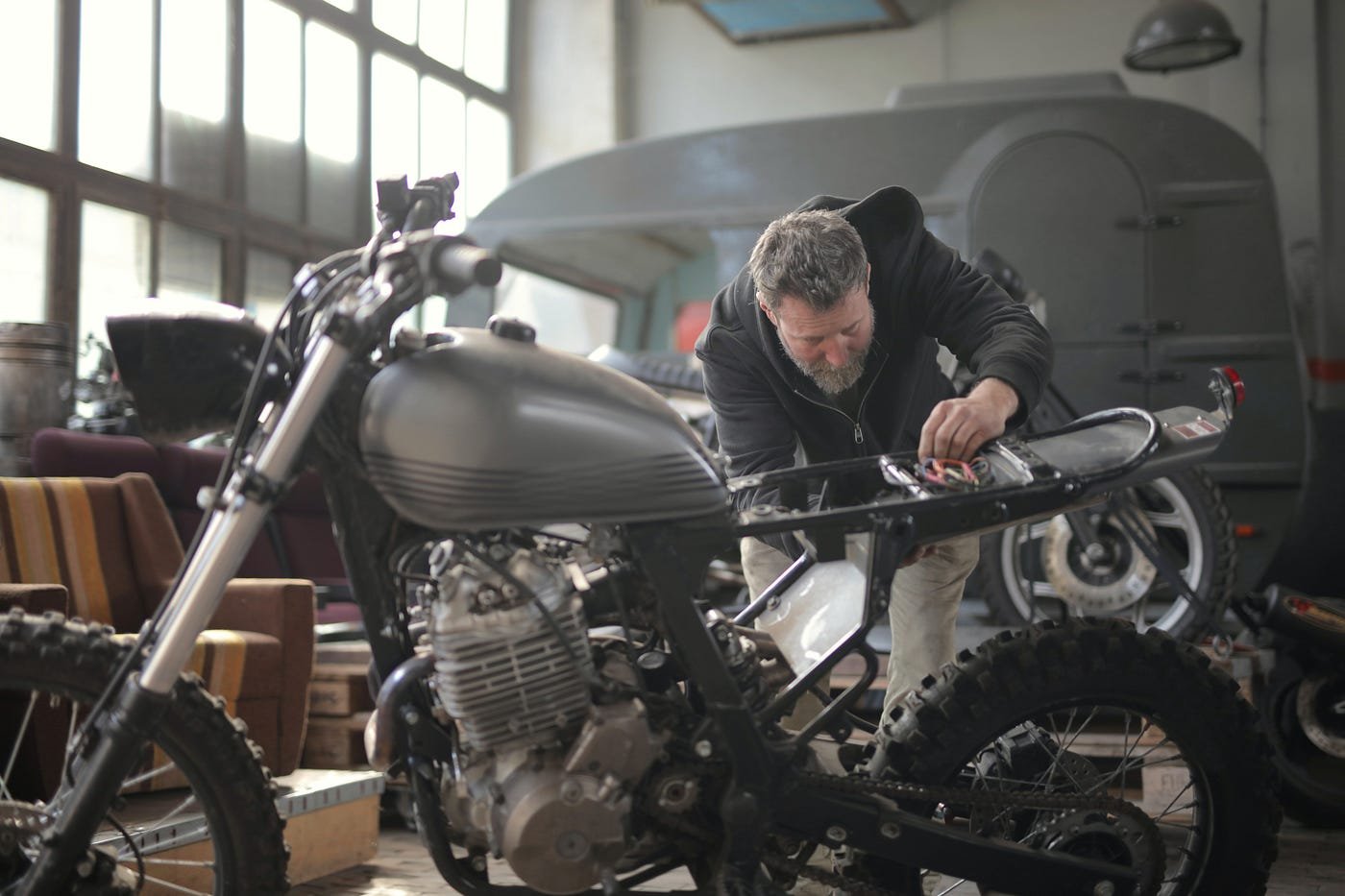
Motorcycle maintenance is crucial for various reasons, ensuring the safety, performance, and longevity of the motorcycle. Below are some key importance of motorcycle maintenance:
- Safety: Regular maintenance helps identify and address potential safety issues before they become serious problems. This includes checking and maintaining brakes, tires, lights, and other crucial components that contribute to overall safety on the road.
- Performance: Proper maintenance ensures that the motorcycle operates at its optimal performance level. Regular oil changes, air filter replacements, and tuning keep the engine running smoothly, resulting in better fuel efficiency and overall performance.
- Reliability: A well-maintained motorcycle is more reliable. Breakdowns and unexpected issues are less likely to occur when the bike is regularly serviced and all components are in good working condition. This is particularly important for long rides and road trips.
- Longevity: Regular maintenance can significantly extend the lifespan of a motorcycle. Replacing worn-out parts, lubricating moving components, and addressing issues promptly help prevent major breakdowns and expensive repairs, ultimately saving the owner money in the long run.
- Resale Value: A motorcycle with a documented history of regular maintenance is more attractive to potential buyers. When it comes time to sell or trade in the motorcycle, a well-maintained bike is likely to fetch a higher resale value than one with a history of neglect.
- Legal Compliance: Ensuring that your motorcycle meets legal requirements is another aspect of maintenance. This includes checking that all lights, signals, and other safety features are functioning properly, helping you avoid potential legal issues.
- Comfort: Regular maintenance also contributes to rider comfort. A smoothly running motorcycle provides a more enjoyable riding experience. Addressing issues like suspension, handlebars, and seating can make a significant difference in the comfort of the rider.
- Environmental Impact: Properly maintained motorcycles tend to be more fuel-efficient, reducing the environmental impact of riding. Regular maintenance helps optimize fuel consumption and minimize emissions.
- Personal Connection: Many motorcycle owners have a strong personal connection to their bikes. Regular maintenance allows riders to stay connected with their machines, understand their unique needs, and appreciate the craftsmanship and engineering that goes into each motorcycle.
Here’s a basic checklist for motorcycle maintenance, along with the tools and materials commonly required. Keep in mind that specific maintenance tasks may vary depending on the make and model of your motorcycle, so always refer to your motorcycle’s manual for manufacturer recommendations.
Basic Motorcycle Maintenance Checklist:
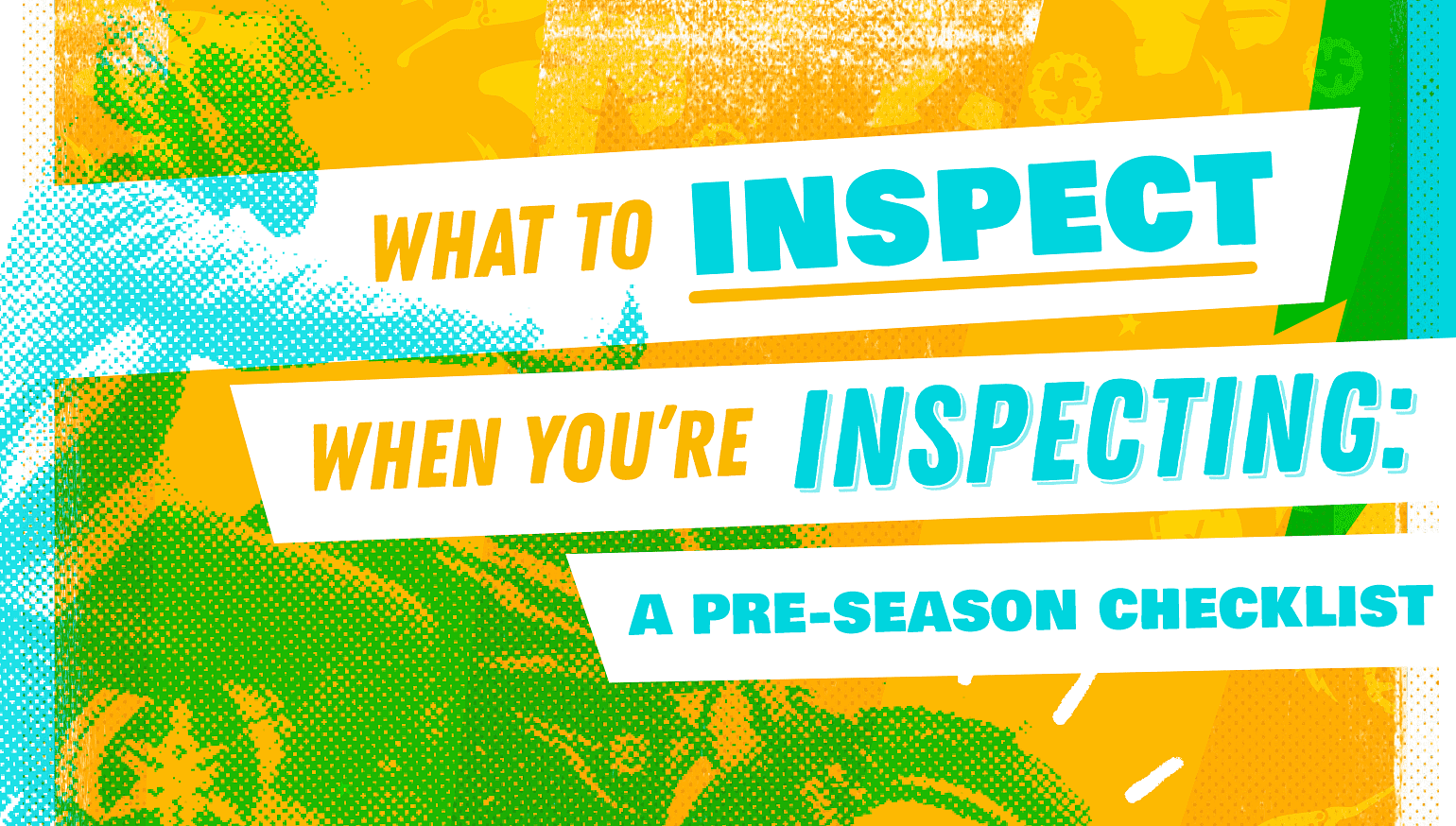
- Oil and Fluids:
- Engine oil change
- Check and top up coolant
- Brake fluid check and replacement if necessary
- Clutch fluid check and replacement if necessary
- Filters:
- Replace oil filter
- Clean or replace air filter
- Check and replace the fuel filter if applicable
- Brakes:
- Inspect brake pads and replace if worn
- Check brake lines for leaks and damage
- Bleed brake system if necessary
- Tires:
- Check tire pressure
- Inspect tires for wear and damage
- Rotate tires if applicable
- Check and adjust wheel spokes if applicable
- Chain and Sprockets:
- Lubricate and adjust chain
- Check chain tension
- Inspect sprockets for wear
- Battery:
- Check battery voltage
- Clean terminals
- Charge or replace the battery if necessary
- Lights and Electrical:
- Check all lights (headlights, brake lights, turn signals)
- Inspect wiring for damage
- Test horn and other electrical components
- Suspension:
- Inspect and adjust suspension settings
- Check fork seals for leaks
- Lubricate pivot points if applicable
- Exhaust System:
- Inspect for leaks or damage
- Tighten any loose bolts or clamps
- General Inspection:
- Check for loose or missing bolts
- Inspect for fluid leaks
- Verify proper operation of controls (throttle, clutch, brakes)
Common Tools and Materials:

- Wrench Set: For tightening and loosening nuts and bolts.
- Screwdriver Set: Phillips and flat-head screwdrivers for various tasks.
- Pliers: Useful for gripping, bending, and cutting.
- Socket Set: Essential for removing and installing nuts and bolts.
- Torque Wrench: For tightening bolts to the manufacturer’s specifications.
- Oil Filter Wrench: Facilitates the removal and installation of oil filters.
- Chain Maintenance Tools: Chain brush, chain lubricant, and chain tension tool.
- Tire Pressure Gauge: For checking and adjusting tire pressure.
- Multimeter: For electrical system diagnostics.
- Brake Bleeder Kit: For bleeding the brake system.
- Lubricants and Fluids: Engine oil, coolant, brake fluid, chain lubricant.
- Shop Rags: For cleaning and wiping surfaces.
- Battery Charger: For charging and maintaining the battery.
- Jack or Stand: To lift the motorcycle for certain maintenance tasks.
Always consult your motorcycle’s manual for specific maintenance intervals and procedures. Additionally, use appropriate safety gear, such as gloves and eye protection, when performing maintenance tasks
DIY vs. Professional Maintenance

DIY maintenance can be cost-effective and a learning experience, but it can also make problems worse if you lack the necessary knowledge and skills.
Professional maintenance can be more expensive, but it ensures expertise and convenience.
Here are some things to consider when deciding between DIY and professional maintenance:
DIY maintenance can save money, but it requires time, skill, and access to tools. If you don’t have experience with vehicle maintenance or repair, the job may take longer than a certified technician.
It’s important to recognize your limitations and prioritize safety and efficiency. Seeking the advice of a professional mechanic is frequently the better course of action when in doubt or handling complicated repairs.
DIY means you won’t sit in an auto shop waiting room for hours, and you get to control when you’re without your ride. However, if you have a busy schedule, it may be more practical to hire a professional repairing service.
You should budget approximately 2% to 5% of your total replacement asset value (RAV) for maintenance.
For some tasks, combining DIY and professional maintenance benefits can be the best approach. For example, you can manage simple tasks like filter replacements and visual checks independently, while a yearly professional inspection can provide in-depth assessment, thorough cleaning, and early detection of potential issues.
When to Consult a Professional Mechanic?
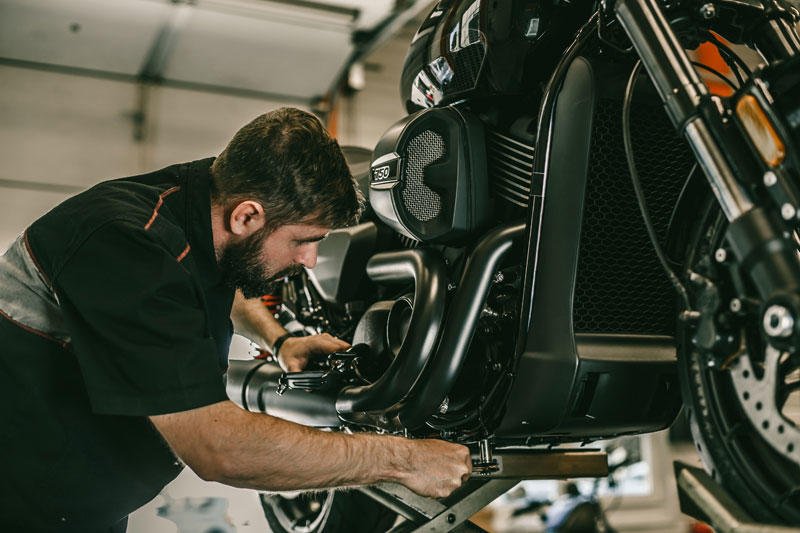
Not all maintenance tasks are DIY-friendly. Recognize when it’s time to seek the expertise of a professional mechanic, ensuring that your bike receives the specialized care it deserves.
You should also consult a mechanic if you notice:
- Strange noises: Unusual sounds like rattles, knocks, or squeals
- Performance issues: Noticeable decreases in acceleration, fuel efficiency, or overall performance
- Leakage: If the oil level continuously goes below the minimum level
- Noisier engine: If the engine is noisier than usual
A professional motorcycle technician can check, maintain, or change critical elements like:
- Engine oil and filter
- Suspension
- Tires
- Drive-chain
- Brake pads and fluids
- Air filter
- Coolant system
- Spark plugs
They can also advise on any upgrades or replacements needed to keep your motorcycle running at its best.
Importance of Regular Inspections
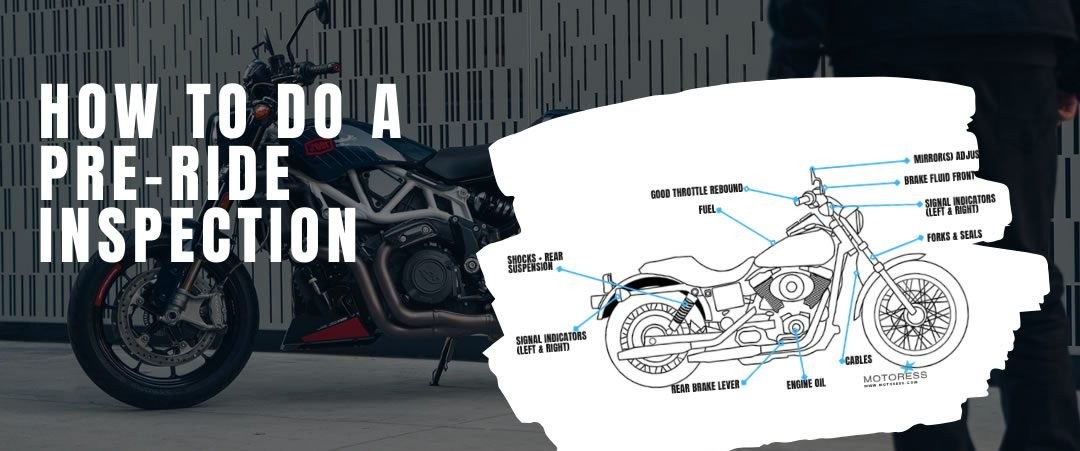
Regular inspections are crucial for maintaining the health and safety of your motorcycle. They help identify potential issues before they escalate into major problems, ensuring that your bike remains in peak condition. Here’s a step-by-step guide to bike inspection, covering pre-ride checks and a monthly maintenance routine:
Pre-Ride Checks:
Perform these checks before each ride to ensure that your motorcycle is safe and ready for the road:
- Tires:
- Check tire pressure using a gauge.
- Inspect tires for any visible damage or signs of wear.
- Ensure proper tread depth.
- Brakes:
- Check the response of the front and rear brakes.
- Check brake fluid levels.
- Inspect brake pads for wear.
- Lights and Electrical:
- Test headlights, brake lights, turn signals, and horn.
- Ensure all electrical components are functioning properly.
- Fluids:
- Check oil levels and top up if necessary.
- Verify coolant levels.
- Ensure proper levels of brake and clutch fluids.
- Controls:
- Check throttle, clutch, and brake levers for smooth operation.
- Ensure proper cable tension.
- Test the free play in the clutch lever.
- Suspension:
- Check for any visible leaks from the forks or shocks.
- Inspect suspension components for wear or damage.
- Test suspension responsiveness by pressing down on the handlebars and bouncing the rear of the bike.
- Chain and Sprockets:
- Check chain tension and adjust if necessary.
- Inspect the chain for signs of wear and lubricate if needed.
- Examine sprockets for wear.
- General Inspection:
- Look for loose or missing bolts.
- Inspect for fluid leaks.
- Verify the security of accessories and luggage.
Monthly Maintenance Routine:

Perform these more in-depth checks every month to keep your motorcycle in top shape:
- Oil and Filter:
- Change the engine oil as per the manufacturer’s recommendations.
- Replace the oil filter.
- Air Filter:
- Clean or replace the air filter based on the manufacturer’s instructions.
- Cooling System:
- Check radiator hoses for leaks or damage.
- Test the radiator cap’s seal.
- Flush and replace coolant if needed.
- Battery:
- Inspect the battery for signs of corrosion.
- Check the voltage of the battery and charge it if necessary.
- Exhaust System:
- Inspect for leaks or damage.
- Tighten any loose bolts or clamps.
- Wheel Bearings:
- Check wheel bearings for play or roughness.
- Lubricate if required.
- Cables:
- Inspect throttle, clutch, and brake cables for fraying or kinks.
- Lubricate cables as needed.
- Drive Belt (if applicable):
- Check for wear and proper tension.
- Replace if necessary.
- Spark Plugs:
- Refer to the manufacturer’s guidelines while inspecting and replacing spark plugs.
Regular inspections and maintenance routines contribute to the overall safety, performance, and longevity of your motorcycle. They allow you to catch and address issues early, ensuring a reliable and enjoyable riding experience.
Tips for Proper Cleaning

A bike that is clean not only looks good but also functions better.
- Use the Right Cleaning Products:
- Choose motorcycle-specific cleaners to avoid damage.
- Use a mild soap or a designated motorcycle wash.
- Start with a Rinse:
- Rinse the motorcycle with water to remove loose dirt.
- Use a hose or a bucket of water with a soft sponge.
- Avoid High-Pressure Washers:
- High-pressure washers can force water into sensitive areas.
- Use a low-pressure hose or bucket to prevent water damage.
- Clean Small Sections at a Time:
- Work on one section at a time to ensure thorough cleaning.
- Use a soft brush or microfiber cloth for scrubbing.
- Mind the Chain:
- Use a chain cleaner and a brush for the chain.
- Lubricate the chain after cleaning.
- Drying:
- Dry the motorcycle with a microfiber cloth or chamois.
- Pay attention to hidden areas where water can collect.
- Detailing for Shine:
- Use a quality motorcycle wax or polish for added shine.
- Apply wax in a circular motion for an even finish.
- Protect Rubber and Plastic Parts:
- Use protectants on rubber and plastic parts.
- Avoid products with petroleum, which can cause damage.
How to Prevent Your Motorcycle From Rust?
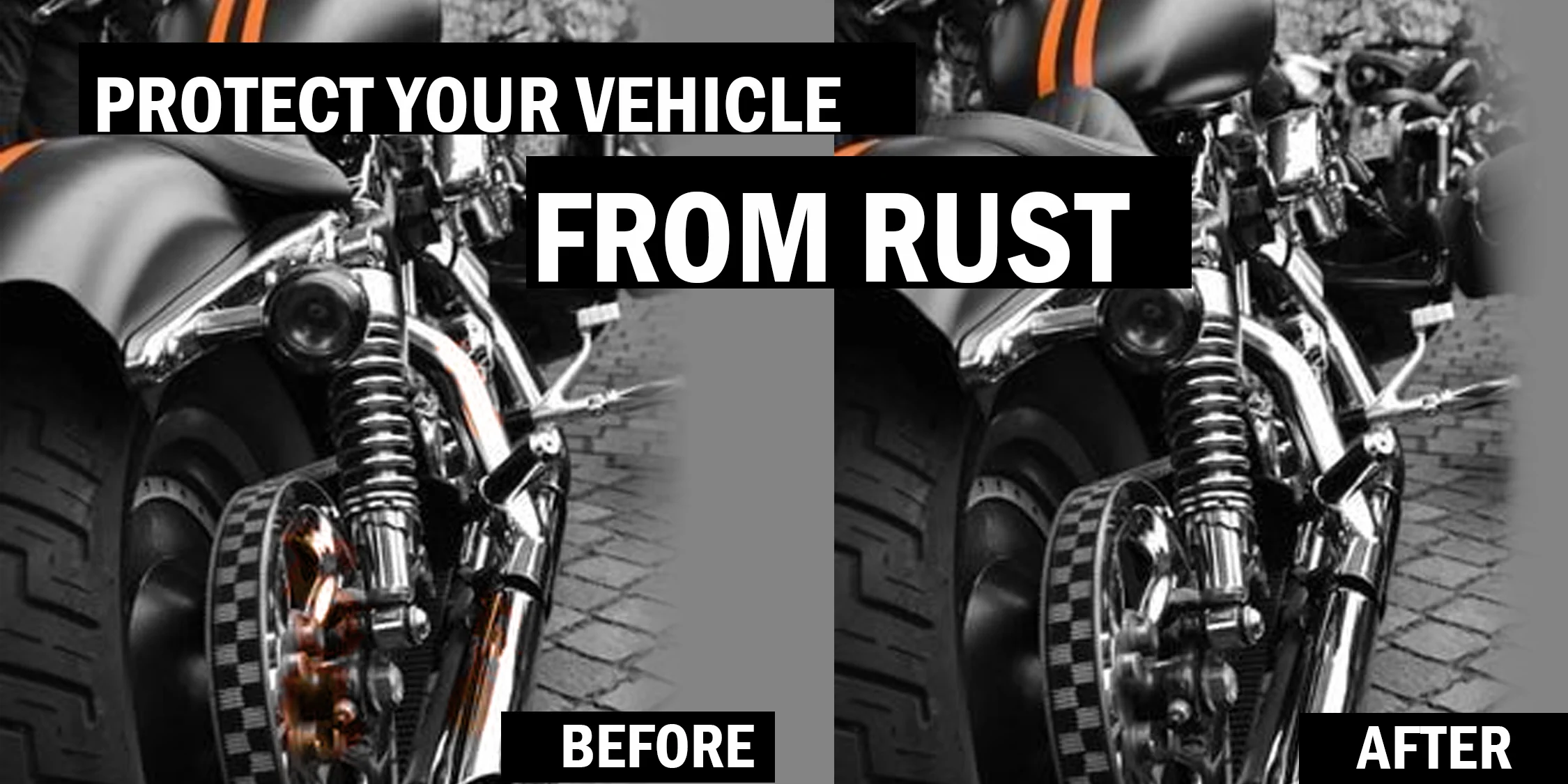
- Regular Inspections:
- Check for signs of rust during cleaning sessions.
- Address any rust spots promptly.
- Apply a Rust Inhibitor:
- Use a rust inhibitor on metal surfaces.
- Focus on areas prone to rust, such as bolts and exhaust pipes.
- Keep the Bike Dry:
- Store the motorcycle in a dry place.
- Use a cover to protect it from rain and moisture.
- Avoid Harsh Chemicals:
- Choose cleaning products that are rust-friendly.
- Harsh chemicals can accelerate rusting.
- Lubricate Moving Parts:
- Regularly lubricate hinges, levers, and other moving parts.
- Use a lubricant that also provides rust protection.
- Quick Repairs:
- Promptly repair any scratches or chips in the paint.
- Touch up with rust-resistant paint if needed.
Remember to follow manufacturer recommendations for cleaning and maintenance, and always test new products in inconspicuous areas before applying them to the entire motorcycle.
Troubleshooting Common Bike Issues
Identifying Strange Noises in your Motorcycle
- Normal Engine Sounds:
- Steady hum or purr when idling.
- Smooth and consistent exhaust note while riding.
- Clicking sounds from the gearbox during gear changes.
- Warning Signs – Unusual Noises:
- Knocking or Pinging:
- Possible issues with fuel quality or incorrect ignition timing.
- Rattling or Tapping:
- Could indicate loose components like valves, cam chain, or a damaged lifter.
- Squealing or Whining:
- Potential problems with the belt, chain, or pulleys in the drive system.
- Grinding or Clunking:
- Transmission or gearbox issues, such as worn gears or a damaged clutch.
- Hissing or Sizzling:
- Leaking exhaust or coolant, or a failing gasket.
- Metallic Screeching:
- Brake issues, like worn brake pads or a damaged rotor.
- Clicking While Coasting:
- Possible issues with the wheel bearings.
- General Tips:
- Pay attention to changes in the usual sound pattern.
- Regularly check for loose bolts or parts.
- Conduct routine maintenance to prevent issues.
- If unsure, consult a professional mechanic for a thorough inspection.
Keep your Bike in Top Shape: Bike Maintenance 101
The joy of riding a well-maintained bike is unparalleled. Bike Maintenance 101: Keeping Your Motorcycle in Top Shape empowers you to be a proactive and responsible motorcycle owner. Follow these guidelines, and enjoy countless miles of smooth, trouble-free riding.
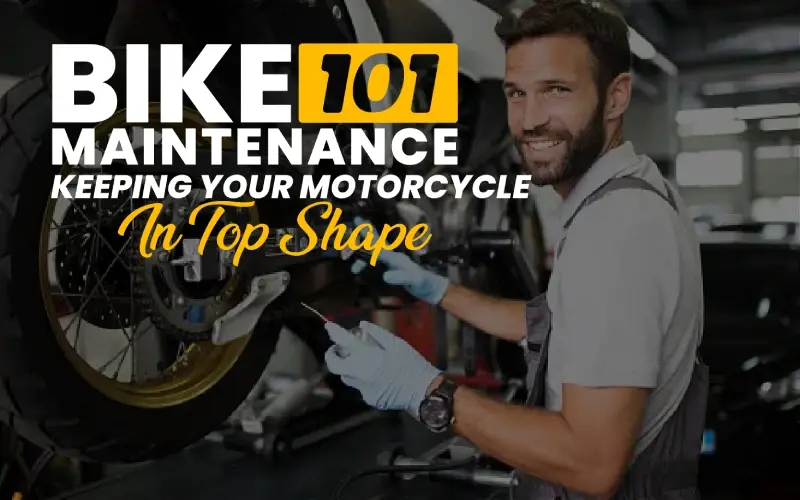
By Jenson Castillo









